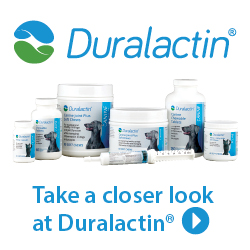Pet Health Articles
 28 Dec
28 Dec
The vitreous is the clear, gel-like substance that fills the space between the lens and the retina. This gel aids in keeping the retina positioned against the back wall of the eye. Causes With aging, calcium and other particles can spontaneously settle out within the vitreous. This causes th...
 28 Dec
28 Dec
The iris is the colored tissue visible in the eye, and its appearance can vary between species and from animal to animal. It is rich in blood supply and is made up of tissue called stroma, as well as muscles that control the size of the pupil. Normally, in bright light, the constrictor (...
 28 Dec
28 Dec
The most common change noted in the eyes of the aging animal is lenticular sclerosis, or hardening of the lens. This is also sometimes referred to as nuclear sclerosis. This is a phenomenon well-known to humans - especially as they approach their fourth decade of life and come to...
 28 Dec
28 Dec
A normal tear film is vital to the health of the surface of the eye. Tears perform numerous functions including lubricating the eye surface to facilitate blinking, keeping the cornea clear and shiny for normal vision, and fighting off infection with natural antibodies and other proteins. ...
 28 Dec
28 Dec
Glaucoma is defined as an increase in intraocular pressure (pressure within the eye). Elevated intraocular pressure (IOP) (greater than 25 mm Hg in the dog and 30 mm Hg in the cat) can lead to pain and irreversible loss of vision. Glaucoma is one of the leading causes of blindness in animals and peo...
 28 Dec
28 Dec
Feline herpes virus is a very common respiratory virus in cats. It is a contagious disease that is most common in kittens or young cats. Up to 85 percent of kittens may be exposed to the virus at birth. Kittens that develop severe infections at birth can wind up with extensive scarring on the...
 28 Dec
28 Dec
Epiphora (excessive tearing) results in persistent wetness, and often staining, of the hair below the eyes. This is not only unsightly (and sometimes malodorous), but it may become irritating to the pet's skin since it creates an excellent bed for bacterial growth and secondary skin infections...
 28 Dec
28 Dec
The third eyelid or Nictitating Membrane is present in most animal species including dogs and cats. Associated with this third eyelid is a gland (gland of the third eyelid) which plays an important role in maintaining ocular health as it contributes to the production of tears. It produces 30 t...

Test Article 4/19/25

Test Only For Dev Updated

Test Only For Dev Video


